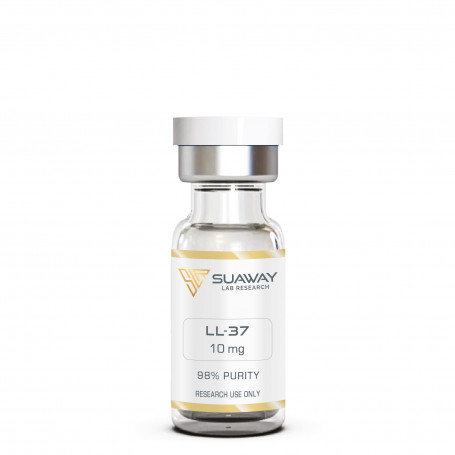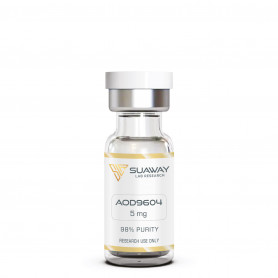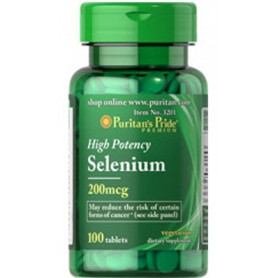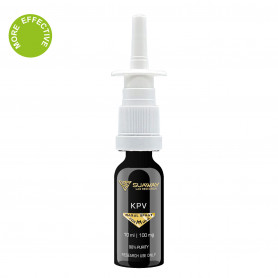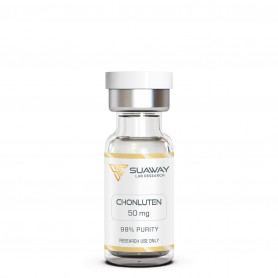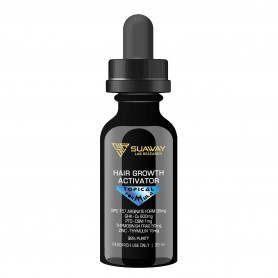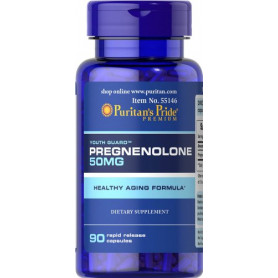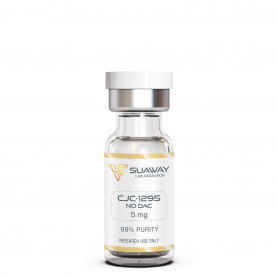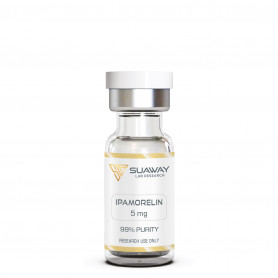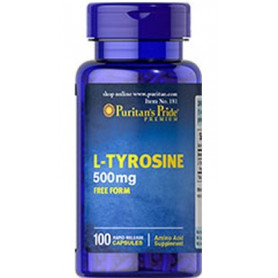LL-37-10 mg
The only member of the enormous protein family known as cathelicidins, which has a variety of functions, is LL-37. These peptides, which are mostly present in macrophages and polymorphonuclear leukocytes (both kinds of white blood cells), are crucial for eliminating germs, but it has been shown that they also have other noteworthy impacts. The antimicrobial peptide is a common term used to describe the whole class (AMPs). According to research, LL-37 is crucial for the treatment of cancer, autoimmune disorders, and wounds. LL-37 has been proven to have an impact on:
- Rheumatoid Arthritis
- Lupus
- Inflammatory Diseases
- Atherosclerosis
- Psoriasis
- Colitis
- Chron's Disease
- Ulcers
- Diabetic foot
- Cancer
- Antimicrobial
Description
STRUCTURE
Synonyms: CAP-18, Cathelicidin, antibacterial peptide LL-37
Sequence: Leu-Leu-Gly-Asp-Phe-Phe-Arg-Lys-Ser-Lys-Glu-Lys-Ile-Gly-Lys-Glu-Phe-Lys-Arg-Ile-Val-Gln-Arg-Ile-Lys-Asp-Phe-Leu-Arg-Asn-Leu-Val-Pro-Arg-Thr-Glu-Ser
Molecular Formula: C205H340N60O53
Molecular Weight: 4493,342 g/mo
CAS Number: 154947-66-7
Peptide Purity: Greater than 98%
Other details: No TFA Salt, No Mannitol
Storage: Lyophilized peptide must be stored at -20°C and peptide solution at 4°C.
LL-37 has low oral and excellent subcutaneous bioavailability
DESCRITPION
The only member of the enormous protein family known as cathelicidins, which has a variety of functions, is LL-37. These peptides, which are mostly present in macrophages and polymorphonuclear leukocytes (both kinds of white blood cells), are crucial for eliminating germs, but it has been shown that they also have other noteworthy impacts. The antimicrobial peptide is a common term used to describe the whole class (of AMPs). According to research, LL-37 is crucial for the treatment of cancer, autoimmune disorders, and wounds.
Antimicrobial Effect
Since LL-37 is a component of the innate immune system, it is one of the first immune system components to become active following an infection. According to research on skin infections, normal skin has relatively low amounts of LL-37, but when pathogens are present, the peptide quickly builds up. It has been shown that the peptide cooperates with other proteins, such as human beta-defensin 2, to fight infection.
LL-37 principally functions by attaching to bacterial lipopolysaccharide (LPS), a crucial element of gram-negative bacteria's outer membrane. For these bacteria, LPS is a crucial part of maintaining membrane integrity. Because of its capacity to bind to and interfere with LPS, LL-37 is particularly lethal to certain bacteria. The peptide has the potential as an exogenous treatment for severe bacterial infections in humans.
Although LL-37 affects gram-negative bacteria's cell membrane components, it also has strong effects on gram-positive bacteria. As a result, it could be an effective therapy for staph infections and other dangerous germs. According to in vitro study, LL-37 improves the effects of lysozyme, an enzyme that kills gram-positive bacteria like Staph aureus.
Inflammatory Diseases
Although LL-37 is generally advertised as an antimicrobial peptide, it also contributes to a variety of inflammatory illnesses, including psoriasis, lupus, rheumatoid arthritis, and atherosclerosis. LL-37 exhibits a variety of immune system regulating activities, depending on the local inflammatory milieu and the specific cells involved.
It is interesting to note that LL-37 does not always have the same effects on the immune system. According to studies conducted in cell culture, the inflammatory milieu influences how immune system cells react to LL-37. When T-cells are not activated, they will respond to LL-37 by becoming more inflammatory, but when they are activated, they will become less inflammatory. It seems that LL-37 has strong homeostatic effects that regulate the immune response and keep it from overreacting in an infection. These results indicate that LL-37 may help control the uncontrolled inflammation associated with autoimmune disorders. This might help to explain the significant association between LL-37 levels and autoimmune illness. The presence of high amounts of LL-37 in an autoimmune illness may be preventing greater fulminant inflammation, according to more recent research. It was previously assumed that LL-37 may be the cause of autoimmune inflammation.
Arthritis
According to rat studies, LL-37 is present in significant amounts in rheumatoid arthritis-affected joints. The peptide seems to be specifically linked to the pathological symptoms of arthritis. However, it is unclear if the peptide is the cause or whether the body is trying to manage the degenerative process by upregulating it in these joints. However, several factors imply that LL-37 is helpful in inflammation rather than being the cause of it.
LL-37 or any other cathelicidin is not thought to have a role in the etiology of inflammatory diseases, to start with. This does not exclude the possibility that the peptide is causal, but the data strongly suggests otherwise. For example, LL-37 deficiency has no impact on the results of arthritis or lupus animal models. In other words, both animals with and without LL-37 go through the same degenerative process. These observations have led researchers to hypothesize that responsiveness to cathelicidins in arthritis is probably an epiphenomenon brought on by the peptide's widespread overexpression in inflammatory tissues. It is accidental, to put it another way.
Peptides produced from LL-37 seem to protect against the collagen damage that often occurs in inflammatory arthritis, according to studies in mice models of the disease. The severity of the illness and blood levels of antibodies against type II collagens are both reduced by administering these peptides directly to the afflicted joints. It is plausible to assume, in light of this data, that LL-37 likely has a protective function in arthritis, which might account for its high concentrations in tissues that have significant inflammation. The fact that LL-37 and its derivatives have been shown to control the inflammation brought on by interleukin-32, a molecule that has been directly linked to the severity of inflammatory arthritis, lends credence to this theory.
In the fibroblasts of synovial fluid, arthritis has also been linked to an up-regulation of toll-like receptor 3, which is expected to worsen arthritis by raising inflammatory cytokine levels. It has been shown that LL-37 binds to TLR4 and either promotes pro- or anti-inflammatory actions. It is unclear what it accomplishes in the presence of TLR3 up-regulation, but research is continuing. Given that LL-37 has previously been reported to selectively diminish pro-inflammatory macrophage responses, the hypothesis that it may reduce inflammation in a particular way is plausible.
Intestine
Research in cell cultures has shown that LL-37 affects the gut in a variety of ways. The peptide stimulates cell migration in the first place, which is important for maintaining the intestine's epithelial barrier. Second, LL-37 slows the progression of certain inflammatory disorders by reducing apoptosis in the presence of intestinal irritation. According to the study, LL-37 may be an effective adjuvant therapy for inflammatory bowel diseases, for usage after intestinal surgery, and acute intestinal infections. It could even be helpful as an adjunct to antibiotic treatment, assisting in reducing the GI side effects that often restrict the use of oral antibiotics.
In the gut, LL-37 collaborates once again with human beta-defensin 2 to facilitate wound healing. According to studies done in cell culture, the peptides cooperate to prevent TNF-related cell death while maintaining and repairing intestinal epithelium.
TNF-alpha inhibitors are now the cornerstone of care for inflammatory bowel diseases. Although they are powerful medications, they also have a variety of dangerous adverse effects, including a markedly increased risk of deadly infections like TB. The creation of inflammatory bowel disease therapies based on LL-37 may lessen the need for TNF-alpha inhibitors and enhance morbidity and mortality in this patient group.
Intestinal Cancer
Although studies on LL-37 and cancer have shown conflicting findings, the peptide seems to be helpful in cases of stomach and intestinal malignancies, including oral squamous cell carcinoma linked to smoking and tobacco use. It is interesting to note that a vitamin-D-dependent mechanism seems to be responsible for these effects, which may help to explain why consuming the vitamin has previously been linked to a lower risk for GI cancer. It seems that vitamin D stimulates tumor-associated macrophages' anti-cancer activity via LL-37.
Lung Disease
As was already noted, bacterial cell walls are not the only source of LPS. It is present in a variety of living things and sometimes gets airborne when a space has been infected by mold or another fungus. Normal lung tissue produces a reaction to inhaling LPS. Unfortunately, the reaction is often insufficient to stop the development of respiratory disorders including asthma, COPD, and more as well as toxic dust syndrome. There is now research being done on the use of LL-37 as an inhalation therapy for toxic dust syndrome.
The fact that the peptide encourages epithelial cell proliferation and wound healing is one of the intriguing results of research into the impact of LL-37 on lung disease. The ability of LL-37 to draw airway epithelial cells to the site of damage and promote wound healing as well as the development of blood vessels required to provide nutrients to the new tissue seems to be one of its main functions, at least in the lungs. Like it is a homeostatic regulator of immune function, LL-37 seems to be a crucial homeostatic regulator in the airways.
Blood Vessel Growth
In endothelial cells, LL-37 seems to stimulate the production of prostaglandin E2 (PGE2). Both inflammatory pain and the expansion of blood vessels are linked to PGE2, although the consequences vary depending on where the molecule is produced. Angiogenesis is the process by which PGE2 causes the growth of blood vessels in endothelial cells. Depending on the context, this may or may not be a positive thing. Since angiogenesis affects the development of cancer, heart disease, stroke outcomes, wound healing, and other conditions, it has become a major area of study in recent years. The angiogenesis pathway may be explored using LL-37 activity, which also serves as a model for prospective future therapies to encourage blood vessel formation when it is necessary (for example, in the case of heart disease) and to inhibit it when it is harmful (e.g. cancer).
REFERENCES
R. Shaykhiev et al., "Human endogenous antibiotic LL-37 stimulates airway epithelial cell proliferation and wound closure" [PubMed]
K.L. Brown et al., "Host defense peptide LL-37 selectively reduces proinflammatory macrophage responses" [PubMed]
P.Y. Ong et al., "Endogenous antimicrobial peptides and skin infections in atopic dermatitis" [PubMed]
D. Kienhofer et al., "No evidence of pathogenic involvement of cathelicidins in patient cohorts and mouse models of lupus and arthritis" [PubMed]
M.D. Salvado et al., "Cathelicidin LL-37 induces angiogenesis via PGE2-EP3 signaling in endothelial cells, in vivo inhibition by aspirin" [PubMed]
J.M. Kahlenberg et al., "Little peptide, big effects: the role of LL-37 in inflammation and autoimmune disease" [PubMed]
M. Golec "Cathelicidin LL-37: LPS-neutralizing, pleiotropic peptide" [PubMed]
Ka-Yee G. Choi et al., "Human cathelicidin LL-37 and its derivative IG-19 regulate interleukin-32-induced inflammation" [PMC]
Xi Chen et al., "Roles and Mechanisms of Human Cathelicidin LL-37 in Cancer" [PubMed]
C.D. Ciornei et al., "Antimicrobial and chemoattractant activity, lipopolysaccharide neutralization, cytotoxicity, and inhibition by serum of analogs of human cathelicidin LL-37" [PubMed]
L.N. Chow et al., "Human cathelicidin LL-37-derived peptide IG-19 confers protection in a murine model of collagen-induced arthritis" [PubMed]
D.S. Alexandre-Ramos et al., "LL-37 treatment on human peripheral blood mononuclear cells modulates immune response and promotes regulatory T-cells generation" [PubMed]
Jan-Michel Otte et al., "Effects of the cathelicidin LL-37 on intestinal epithelial barrier integrity" [PubMed]
M.H. Hoffman et al., "The cathelicidins LL-37 and rCRAMP are associated with pathogenic events of arthritis in humans and rats" [PubMed]
Jan-Michel Otte et al., "Human beta defensin 2 promotes intestinal wound healing in vitro" [PubMed]
X. Chen et al., "Synergistic effect of antibacterial agents human beta-defensins, cathelicidin LL-37 and lysozyme against Staphylococcus aureus and Escherichia coli" [PubMed]
D. Xhindoli et al., "The human cathelicidin LL-37--A pore-forming antibacterial peptide and host-cell modulator" [PubMed]
Wenhua Zhu et al., "Arthritis is associated with T-cell-induced upregulation of Toll-like receptor 3 on synovial fibroblasts" [PubMed]
DISCLAIMER
This product is intendend for lab research and development use only. These studies are performed outside of the body. This product is not medicines or drugs and has not been approved by the FDA or EMA to prevent, treat or cure any medical condition, ailment or disease. Bodily introduction of any kind into humans or animals is strictly forbidden by law. This product should only be handled by licensed, qualified professionals.
All product information provided on this website is for informational and educational purposes only.

